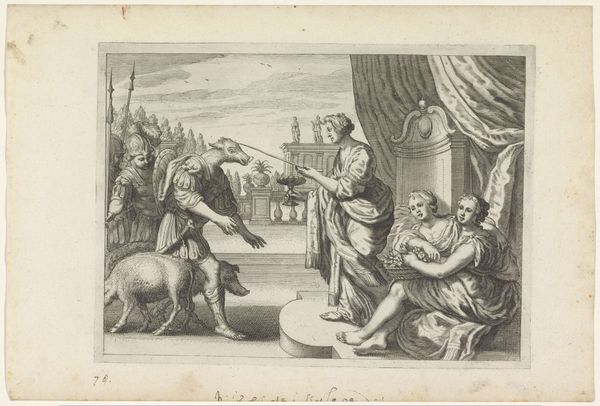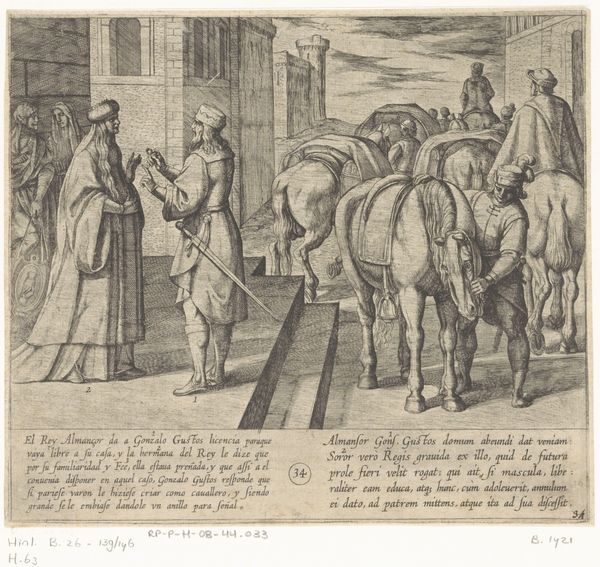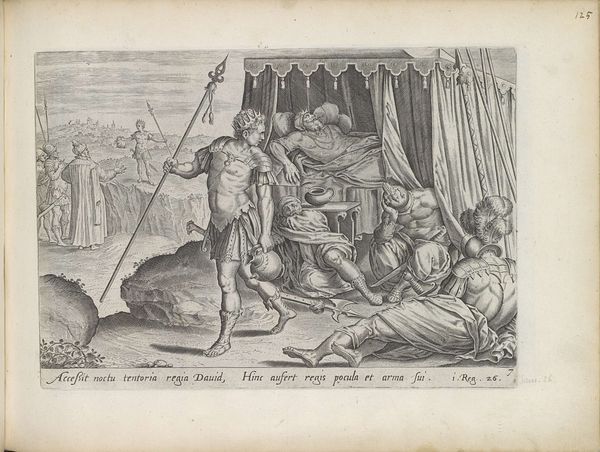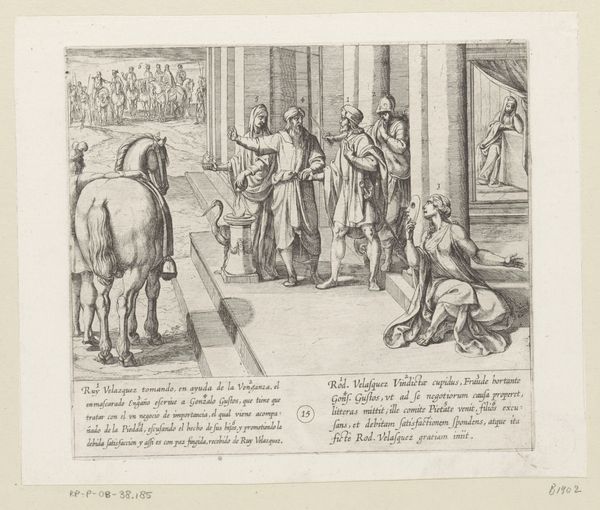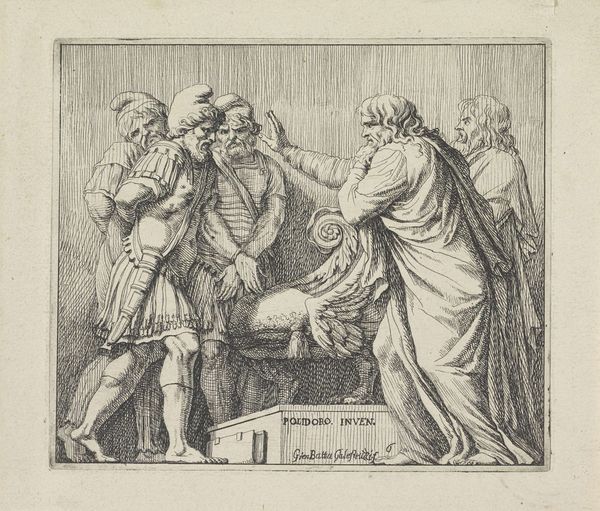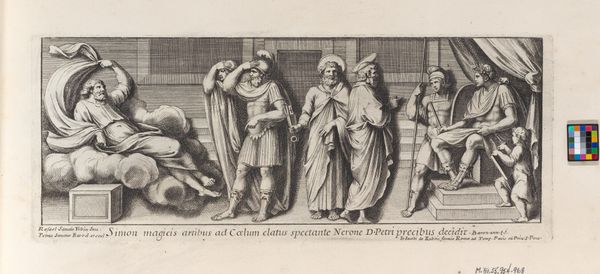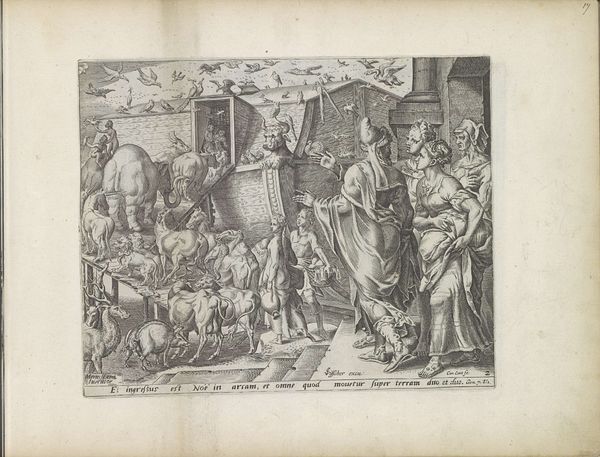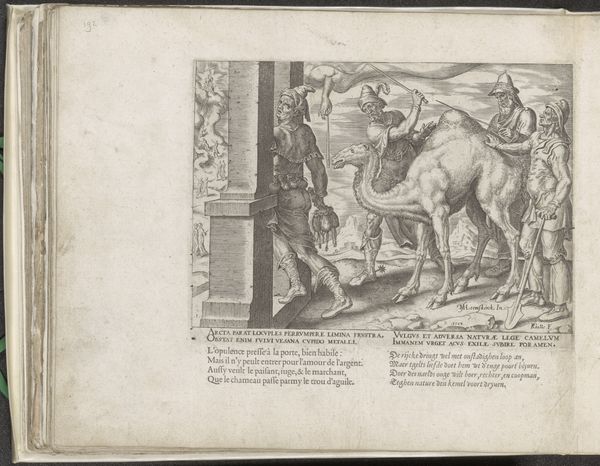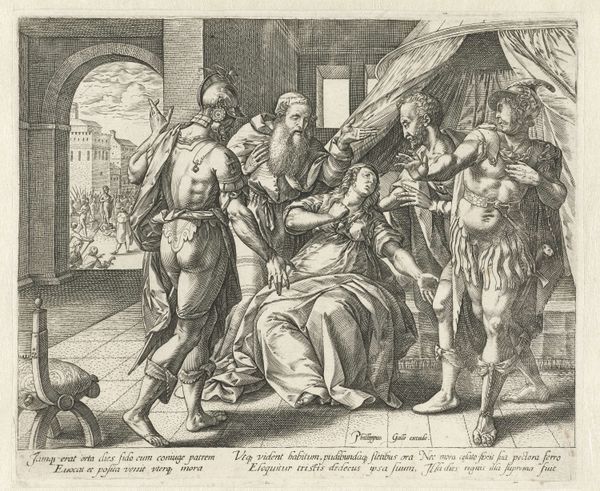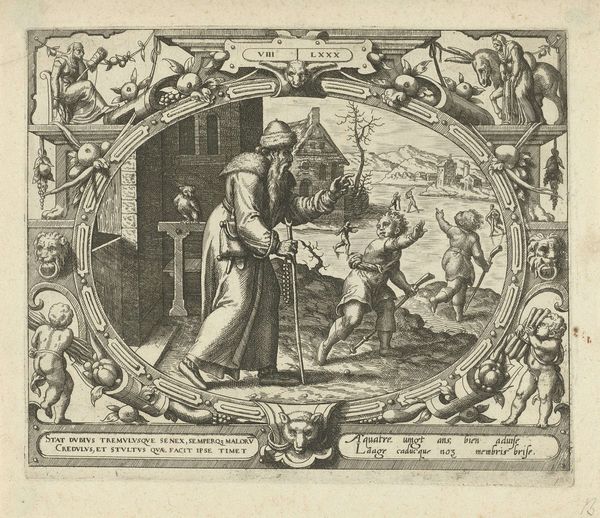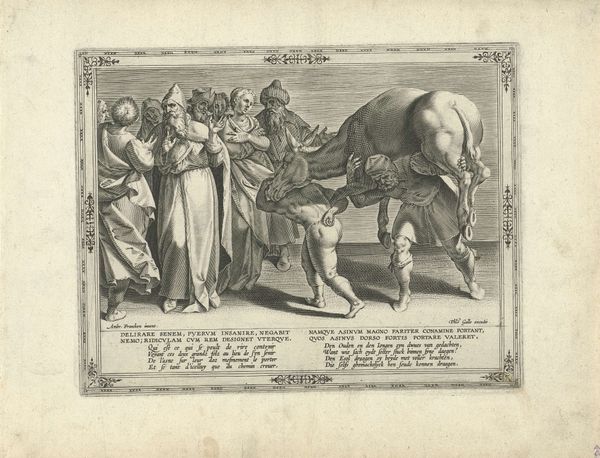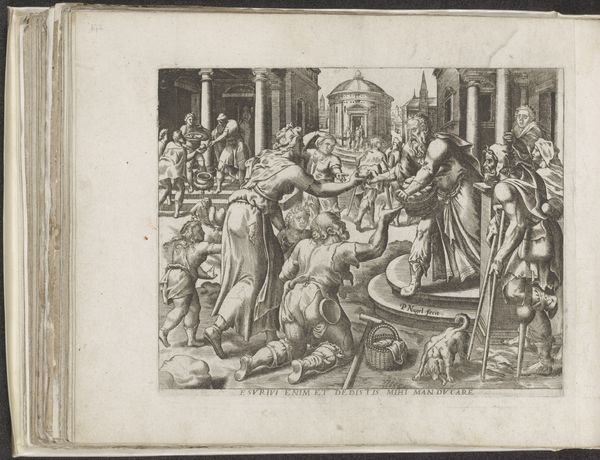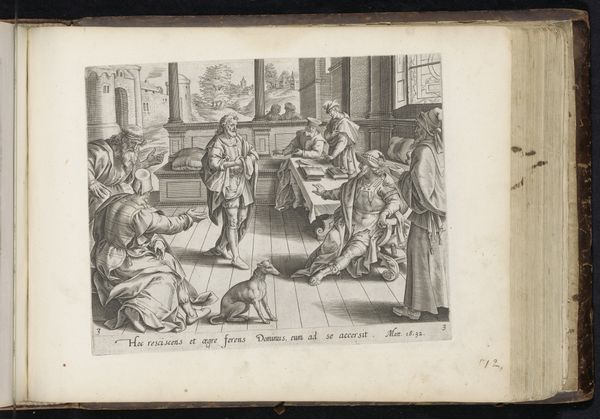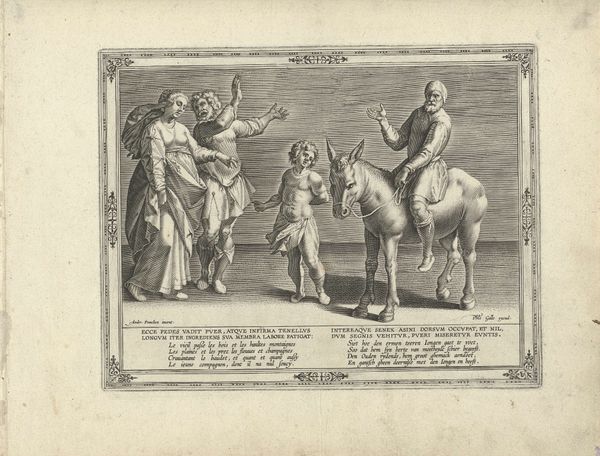
Plate 135: Circe Changing Ulysses' Men into Swine (Ulyssis soci a Circe in porcos), from Ovid's 'Metamorphoses' 1606
0:00
0:00
drawing, print, engraving
#
drawing
#
allegory
#
baroque
# print
#
figuration
#
history-painting
#
engraving
Dimensions: Sheet: 4 1/8 × 4 1/2 in. (10.5 × 11.5 cm)
Copyright: Public Domain
Curator: This engraving, dating to 1606, by Antonio Tempesta, illustrates an episode from Ovid's 'Metamorphoses': "Plate 135: Circe Changing Ulysses' Men into Swine." The location of this engraving is the Metropolitan Museum of Art, New York. Editor: Well, right away, I’m struck by the incredible detail achieved through engraving. Look at the textures! You can almost feel the coarse hair of the swine. The etching is really dynamic in creating that tone, wouldn't you say? Curator: Absolutely. Tempesta's Baroque style really emphasizes the drama of the transformation. Think about the context – Ovid was writing under an empire and speaking of power; this image can be read as speaking to abuses of power by autocratic rulers, transforming people into base animals, devoid of reason. The power dynamics are explicitly gendered, aren’t they? Editor: Precisely! Circe stands in command, holding a wand while extending a goblet. Her material presence is interesting in this portrayal. The objects she commands-- the goblets and the wand—become extensions of her power, physical tools of metamorphosis. Note her garments in contrast to that of the figures changing. It does raise questions about control, doesn't it? Curator: And what is being made is really quite horrifying when we consider these soldiers losing not just their physical forms, but their very identities. Are they merely victims of Circe’s wrath, or are they symbols of men debased by their own desires, transformed into monstrous forms reflecting inner corruption? And if we consider the viewer within that perspective of self-reflection, what does that make of them? Editor: Right, so much is embodied by the act of creation in this work and how it affects the individual. The medium becomes part of the story—the physical act of engraving itself mirrors the transformative act of Circe, one changing the very properties of a surface. Curator: That intersection is striking—Circe as artist or artisan, her "craft" revealing uncomfortable truths about those who seek to consume what she offers. It encourages one to consider if craft is debasing here. Editor: It does make one consider the transformative potential and moral weight of artistic making, particularly during Tempesta’s time. Thanks for elucidating the cultural relevance for me, Curator. Curator: Likewise, I found your material analysis extremely insightful; it certainly shifted my focus.
Comments
No comments
Be the first to comment and join the conversation on the ultimate creative platform.
